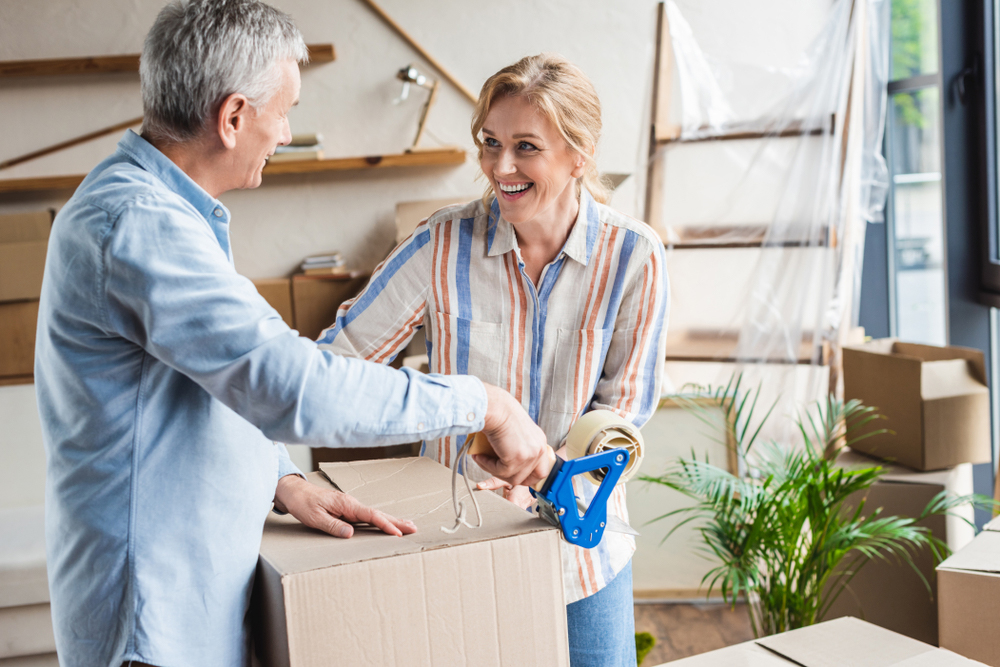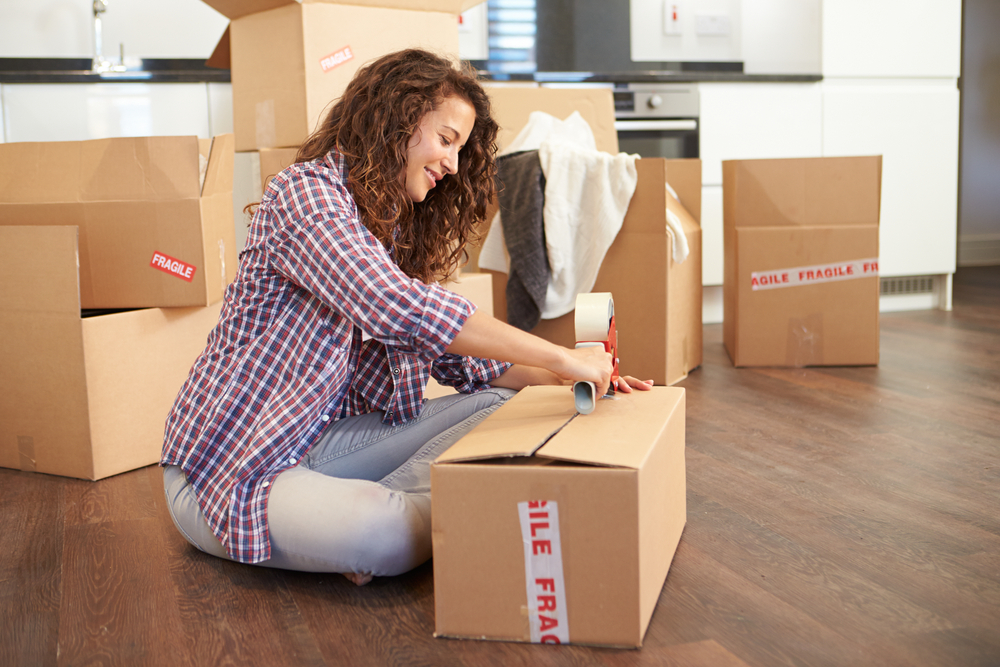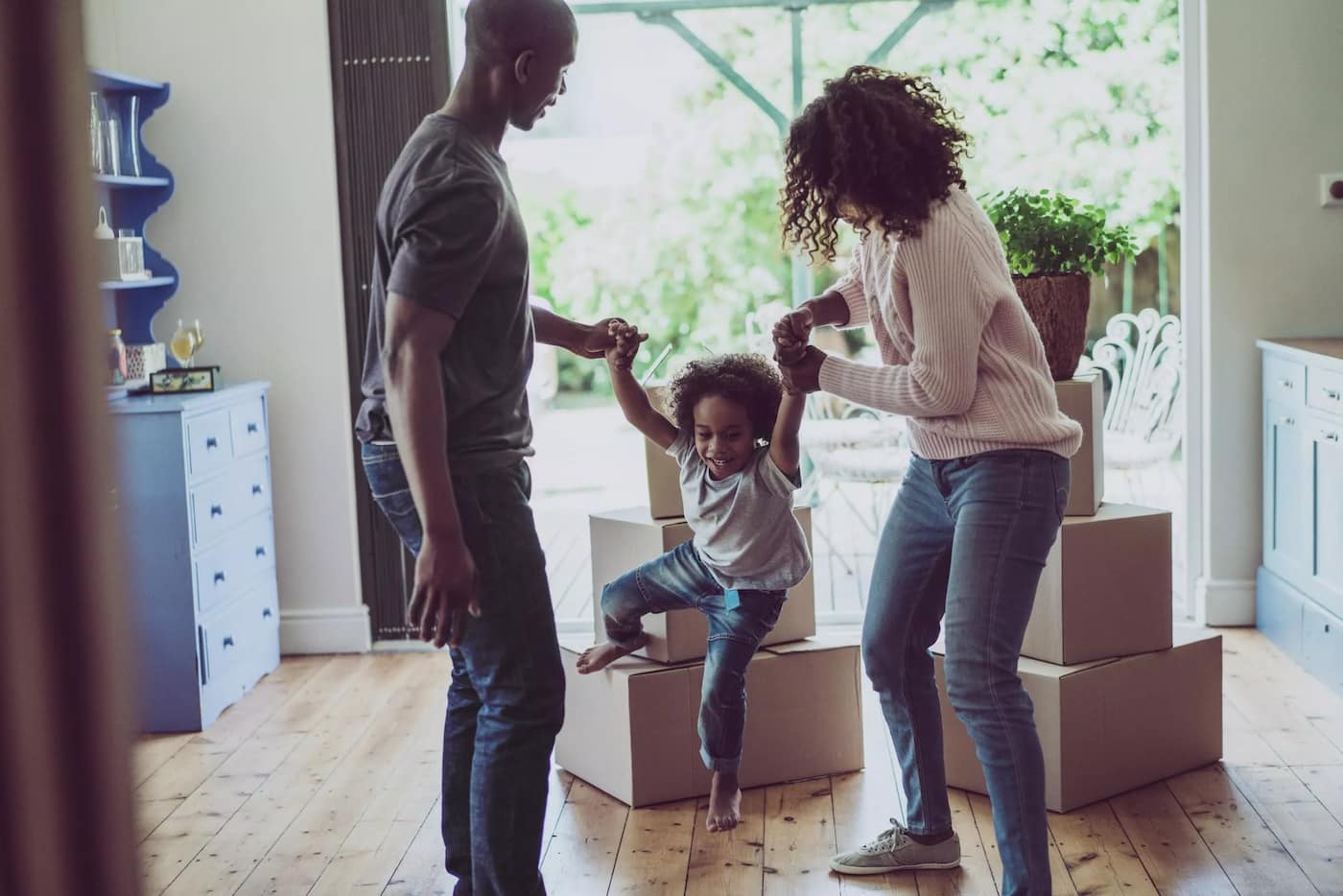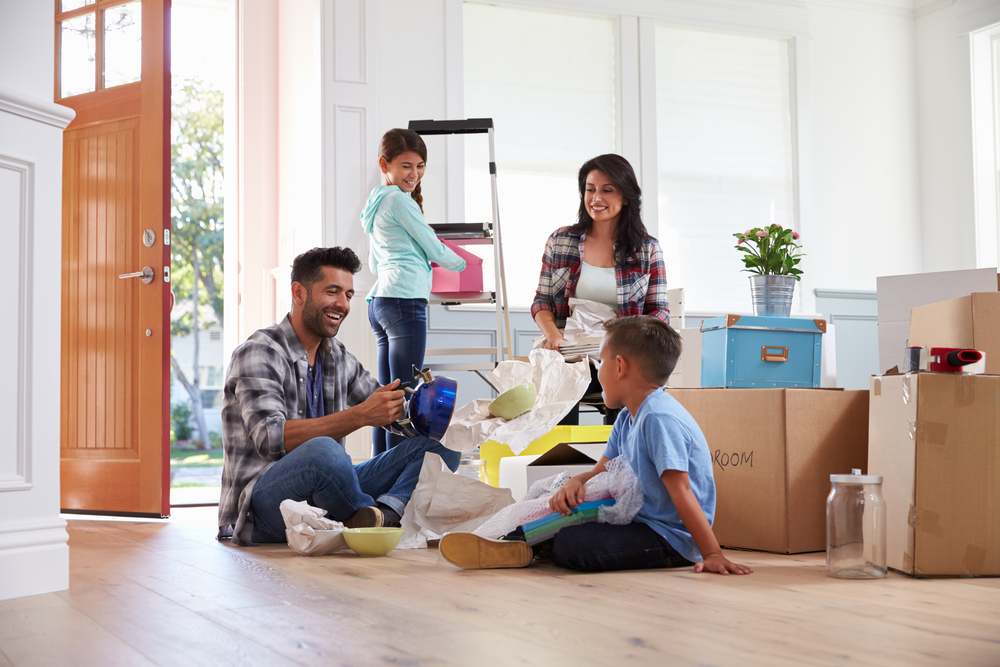Getting ready to move? Knowing how to pack efficiently can help you avoid packing mistakes that result in damaged items or personal injury. Smart packing also keeps you organized, making it easier to find things when unpacking in your new home. Below, we share our tips for packing moving boxes effectively and efficiently!
Gather Essential Moving Supplies
Before you start packing, make sure you have all the right packing supplies! Sturdy moving boxes can be purchased from local storage companies, moving companies, and home goods stores. You can also ask for free moving boxes from local businesses, family, friends, schools, and retail stores—just make sure the boxes you get are clean, strong, and the right size for your items. Or opt for plastic moving boxes, which are more expensive but extra durable—and better protect items from water, dirt, and bugs. In addition to boxes, here’s more essential moving supplies:
- Packing labels & permanent markers
- Packing paper, packing peanuts, or bubble wrap
- Packing tape
- Box cutters or scissors
- Resealable plastic bags
- Shrink wrap
- Dish packing kits
- Wardrobe moving boxes
Prep Boxes
Before you start packing up your items, securely tape the underside of each box and then use packing foam, bubble wrap, towels, or blankets to line the insides of your boxes. This will stabilize the bottoms to help prevent heavy items from breaking through and falling out as you’re moving. The layer of padding can also help protect your items from dirt and moisture when you set boxes on the ground.
Sort Items Before Loading
Going room by room through your house, organize your possessions into three groups: necessities, heavy items, and light items. It’s important to identify all your household necessities first—such as clothes, toiletries, and bathroom supplies—since you’ll need to access them immediately after moving into your new home. Then, begin grouping like items together, or find combinations of belongings that would be good in the same box.
Pack Moving Boxes According to Weight
When packing for a move, it’s a good idea to place heavier belongings in small boxes and lighter items in large boxes. Using smaller moving boxes for heavy items helps you avoid overfilling them to the point where they could break or become too heavy to carry. On the flip side, large boxes are great for packing lighter belongings like clothing, towels, bedding, and like items, since you can fit more into them without making them too difficult to move. If you need to mix heavy and light items in some boxes to fill gaps, be sure to put the heaviest items at the bottom and then layer lighter items on top to avoid damaging your belongings. In general, try to keep each box under 30 pounds so you can easily transport them—and save yourself a backache later!
Pack & Label Moving Boxes by Room
In addition to dividing items among boxes by necessity and weight, it’s also key to keep items from the same room together when packing boxes for a move. This will help you keep track of where things are as you unpack in your new home. Make sure to label each box according to room—kitchen, bathroom, living room, bedroom, etc.—and consider going a step further with more specific labels like “Kitchen Pantry” or “Bathroom Linens” to make the unpacking process even quicker and easier.
Don’t Under or Overpack Boxes
It’s a good idea to pack moving boxes completely full to stack them stably during your move, but don’t overdo it. Overpacking can cause boxes to break or items to get damaged by other things inside the box—and it can even lead to injuries while lifting and carrying them. On the other hand, under-packing your boxes can cause them to collapse when stacked. To eliminate empty space in boxes, prevent shifting during the move, and keep your boxes strong and stackable, stuff padding into any gaps. A properly packed box should feel firm when pressed upon, but it should also close easily, without any items poking up or out against the sides of the box.
Take Extra Care Packing Fragile Items
With fragile belongings like electronics, glassware, dishes, mirrors, and antique items, it’s a good idea to wrap them individually with a protective layer before placing them in moving boxes. Bubble wrap, packing paper, packing peanuts, newspaper, towels, bedsheets, dish packing kits, and even spare clothing can be used to pad delicate items and prevent them from getting damaged while moving.
Use Wardrobe Boxes for Clothes
Wondering how to pack clothes for moving? Rather than trying to stuff your clothes into standard moving boxes, opt for wardrobe moving boxes! These specialty boxes typically come with a rod that allows you to hang clothing inside the box, keeping clothes wrinkle-free and making it simpler to transport them. This is especially helpful if you have a lot of dress clothes that wrinkle easily.
WHAT SIZE MOVING TRUCK DO I NEED?
Keep Small Miscellaneous Items in Bags
Instead of dropping items like cords, phone chargers, ethernet cables, screws, and small knick-knacks into a box all together, place them in resealable plastic bags and put them at the tops of boxes for their associated rooms. This will help you remember what they go with when unpacking, making setup in your new home easier. Resealable bags are also helpful when packing liquids like toiletries or cleaning products, as they can help protect electronics, papers, clothes, and more from any spills or leaks.
Properly Close & Tape Each Moving Box
When you’re finished packing a box, use extra packing materials to line the top before closing and sealing it with packing tape. While you may be tempted to tuck the box flaps into each other rather than using tape, this approach can structurally compromise your boxes and make stacking them more difficult, since the tops will be uneven. Instead, fold the flaps flat, with the smaller ones inside and the larger ones over top, and then tape them down. One way to do this is with the H-taping method, so that all edges are fully secured. Make sure to extend the strips of tape over the sides of the box so there’s less chance of them coming unstuck.
***
Need a place to temporarily store items while moving? Extra Space Storage has convenient storage facility locations throughout the nation, so we can help with your transition. Find storage units near you!



